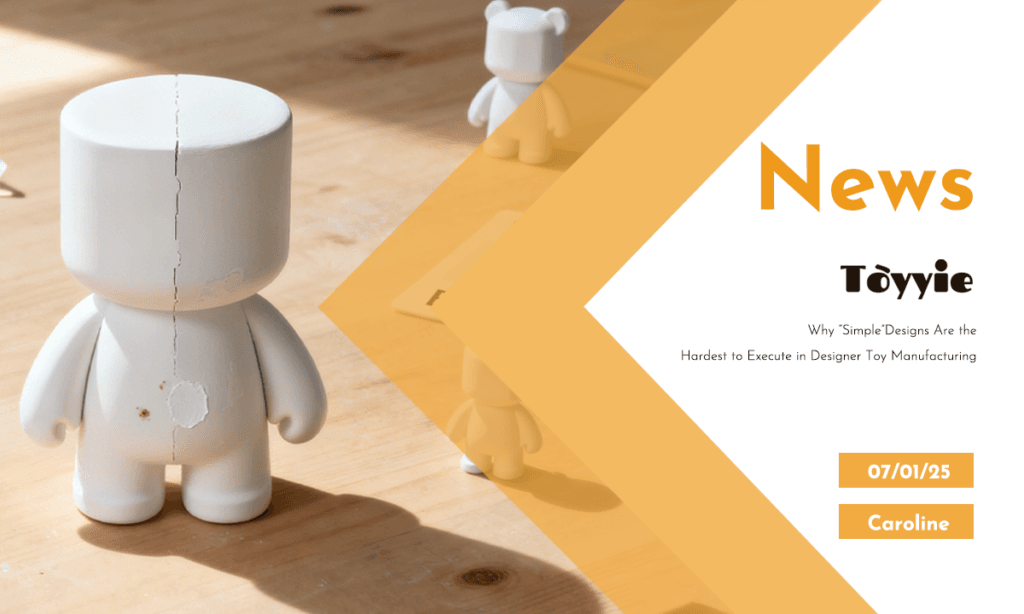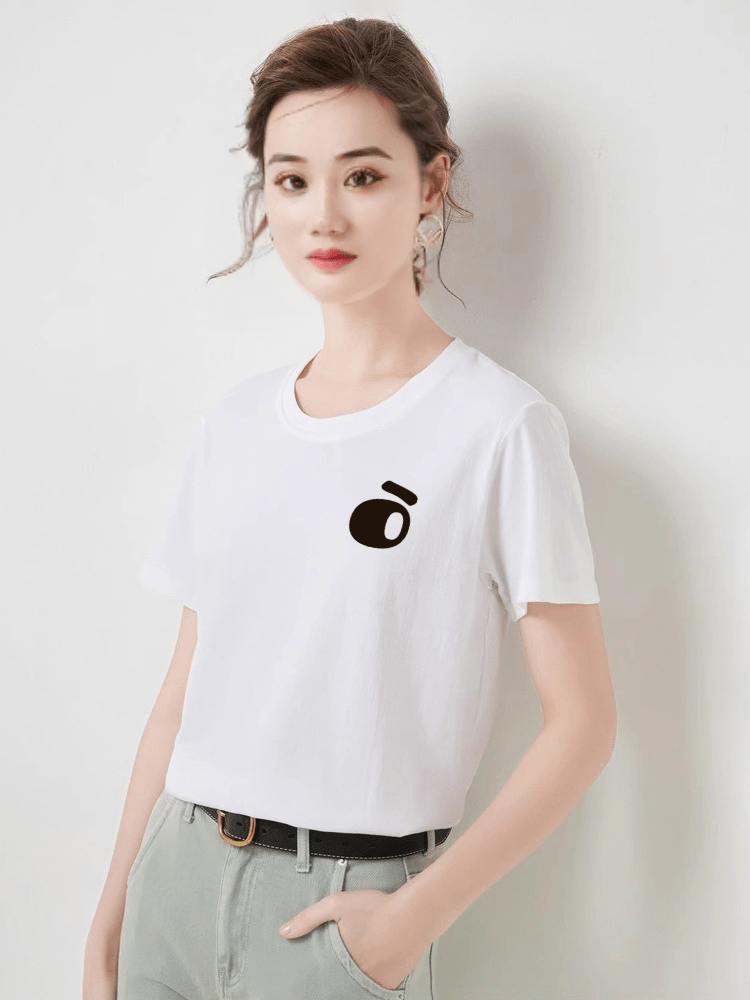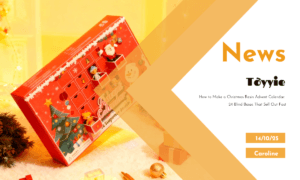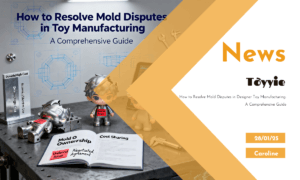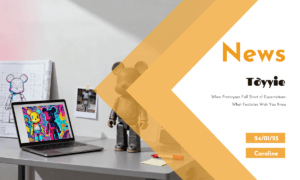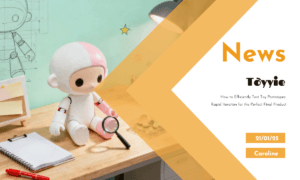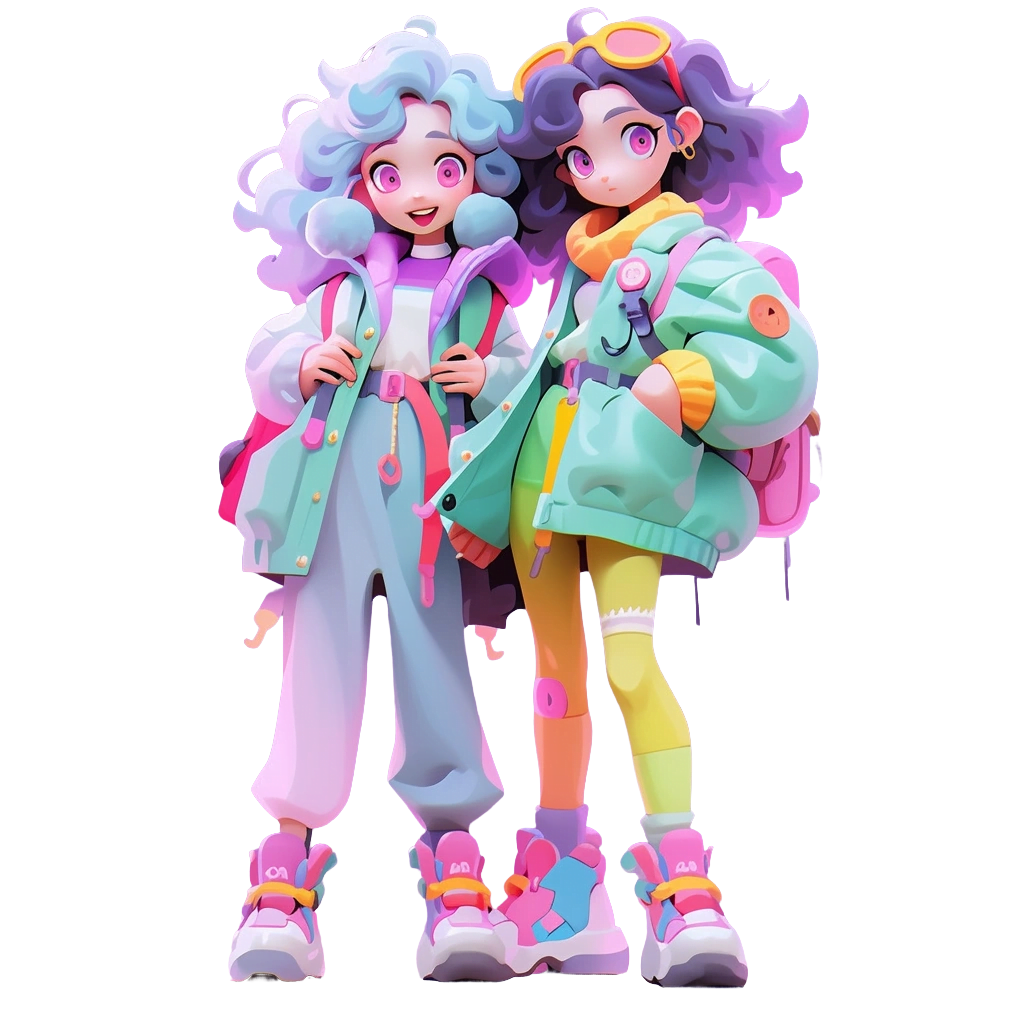📌 Introduction📌
When I first started working in the world of designer toy production, I was often caught off guard by a recurring irony: the designs that looked the simplest on paper often turned out to be the most challenging to bring to life. At first glance, a minimalist figure or a clean, geometric design might seem straightforward—“There’s nothing complicated here!”—but the reality is far more nuanced.
In this post, I want to take you through why this happens, sharing stories and insights from my experience. Whether you’re a seasoned toy designer or just dipping your toes into this industry, this guide will help you better understand the hidden complexities of seemingly simple designs. And, most importantly, I’ll share practical tips to help you navigate these challenges and ensure your creative vision comes to life exactly as you imagined.
🎨 The Illusion of Simplicity
What makes a design look “simple”? It’s usually clean lines, minimal details, or smooth surfaces. These features are visually appealing and universally loved, but they also leave little room for error. Every imperfection becomes glaringly obvious.
For example, I once worked with a designer on a sleek, cylindrical toy figure. It seemed straightforward—just one smooth, curved surface. However, during production, we discovered how difficult it was to achieve a perfectly smooth surface without visible seams or uneven paint. Small imperfections that might go unnoticed in a more detailed design were painfully obvious here.
Why this happens:
Lack of texture or details to hide flaws:In intricate designs, small imperfections can blend in with textures or busy patterns. Simple designs, on the other hand, put every little detail under a magnifying glass.
Precision becomes critical:When you’re working with clean, sharp edges or smooth curves, even a 0.1 mm deviation in the mold can ruin the look.
🔧 Manufacturing Tolerances: A Hidden Challenge
Manufacturing isn’t as precise as people often think. Every process—mold creation, injection molding, painting—has a tolerance range, meaning there’s always a small margin of error. With simple designs, these tolerances become much more noticeable.
Imagine you’re producing a toy with a perfectly round head. The mold might have a tolerance of ±0.2 mm, which sounds negligible. But when the product comes out slightly oval instead of perfectly round, the simplicity of the design makes the flaw impossible to ignore.
Key factors to consider:
Material shrinkage:Materials like plastic shrink as they cool, which can distort simple shapes.
Painting and coating layers:Even a slightly uneven coat of paint can throw off the clean look of a simple design.
🎨 Color Matching Is Harder Than You Think
Simple designs often rely heavily on color to convey their aesthetic. A solid-color toy with no gradients, patterns, or decals might seem easy to produce, but achieving consistent, flawless color across batches is one of the hardest parts of manufacturing.
I remember a project where the toy was a single shade of bright yellow. It wasn’t until we saw the final batch that we noticed some pieces were slightly darker than others. The cause? A subtle inconsistency in the mixing of pigments.
Challenges with color in simple designs:
Consistency across batches:Even slight variations in color can ruin the clean aesthetic.
Material and paint interactions:Some materials absorb paint differently, which can lead to uneven finishes.
🖌️ Smooth Surfaces Amplify Defects
One of the most deceptively challenging features of a “simple” design is a smooth surface. Any slight imperfection—like a scratch, a dent, or a bubble—stands out dramatically.
I once worked on a toy with a glossy, mirror-like finish. The design was breathtaking in concept but nightmarish in execution. Every tiny flaw, from mold lines to specks of dust during painting, was visible on the reflective surface. We had to redo multiple batches just to get a handful of perfect samples.
What makes smooth surfaces difficult:
Seam lines:Molded toys often have visible seams where the mold pieces come together. Removing these seams on a smooth surface requires extra work, like sanding and polishing.
Painting challenges:Achieving an even, flawless coat on a smooth surface requires highly controlled conditions and skilled workers.
📏 Simplicity Requires Perfect Proportions
Simple designs often rely on balanced proportions to achieve their visual appeal. Unlike more complex designs, where extra details can distract from minor asymmetries, simple designs have nowhere to hide.
For example, a toy with a minimalist silhouette—a perfect circle for a head, evenly spaced eyes, and a symmetrical body—needs everything to be perfectly aligned. Even a slight misalignment can make the design look “off.”
How to address proportion challenges:
Invest in precise prototyping:Use 3D printing or other high-precision methods to test proportions before committing to molds.
Pay attention to assembly:For multi-part designs, ensure that all pieces fit together perfectly during production.
💸 Minimalism Doesn’t Mean Low Cost
Another misconception about simple designs is that they should be cheaper to produce. After all, less detail means less work, right? Unfortunately, the opposite is often true. Achieving simplicity requires more time, more precision, and often more expensive materials and processes.
For example, a toy with a matte black finish might require additional coatings to achieve the desired texture and to protect it from fingerprints or scratches. These extra steps add to both production time and cost.
💬 Communication Gaps Between Designers and Manufacturers
One of the biggest reasons simple designs fail in execution is a lack of clear communication. Designers may assume that manufacturers understand the importance of tiny details, while manufacturers may prioritize efficiency over perfection.
I’ve seen projects where designers didn’t specify things like acceptable color tolerances or surface finishes, leading to disappointment when the final product didn’t meet their expectations.
How to bridge this gap:
Be specific:Clearly outline every detail, from dimensions to textures, in your design brief.
Request samples:Ask for material and paint samples to ensure alignment before full production.
Stay involved:Regularly review progress during production to catch issues early.
🛠️ How to Overcome These Challenges
Despite these hurdles, simple designs can be successfully executed with the right approach. Here’s what you can do:
Partner with experienced manufacturers:Work with factories that understand the unique challenges of simple designs and have a track record of high-quality production.
Invest in prototyping:Don’t skip this step. Prototypes help identify potential issues before they become costly mistakes.
Embrace iteration:Be prepared to refine your design and production process multiple times to achieve perfection.
🌟 Final Thoughts: Simplicity Is Deceptively Complex
As a designer, you may dream of creating minimalist toys that are elegant, timeless, and visually striking. But don’t be fooled—simplicity is hard work. It demands precision, attention to detail, and a deep understanding of manufacturing processes.
The good news? When done right, these simple designs can become iconic. By understanding the challenges and working closely with your manufacturing partner, you can bring your vision to life—and create something truly unforgettable.
If you’ve faced challenges with “simple” designs or want advice on your next project, feel free to reach out. I’d love to hear about your experiences and help you navigate the complexities of toy manufacturing. Let’s make something amazing together!🧸

